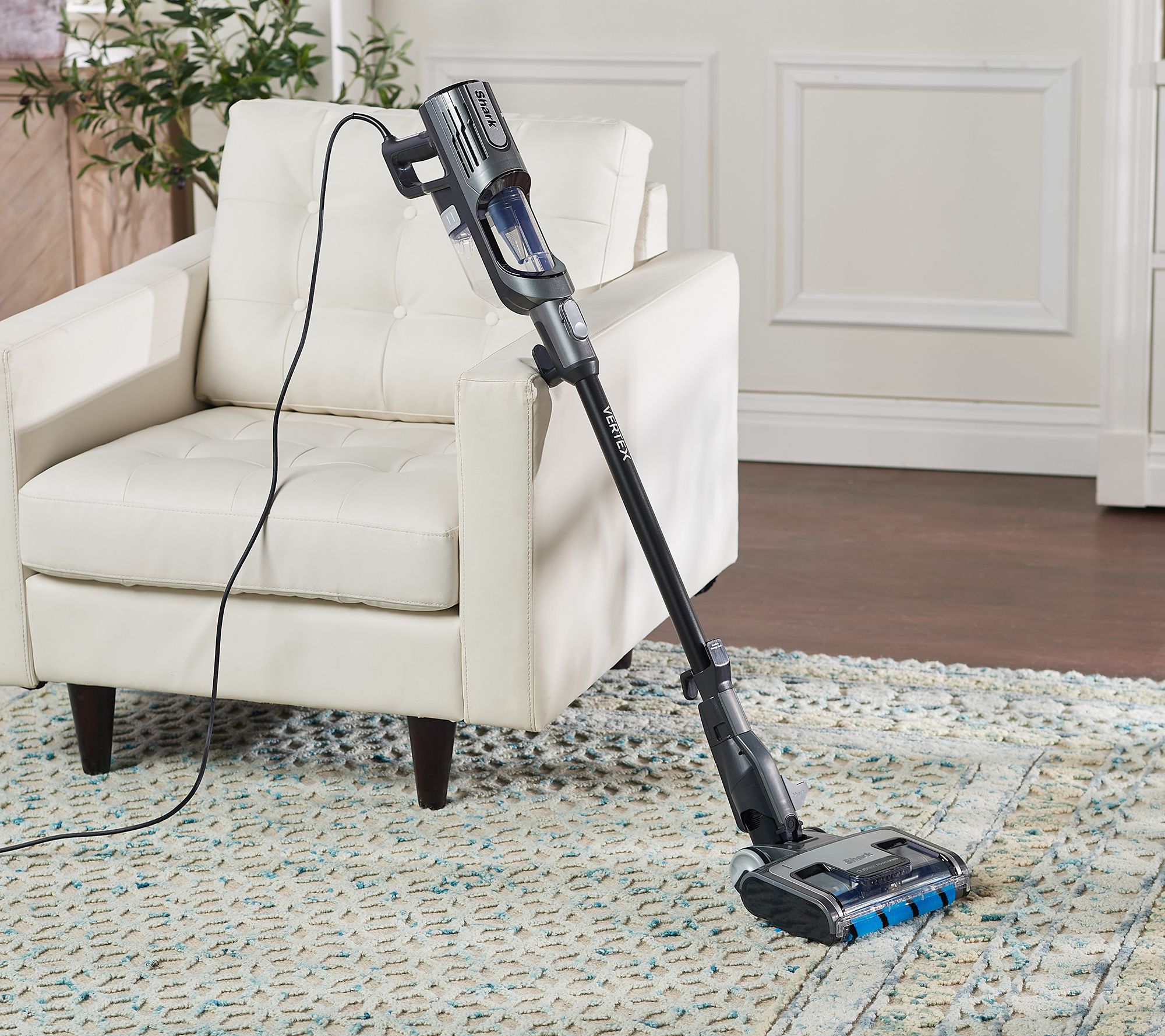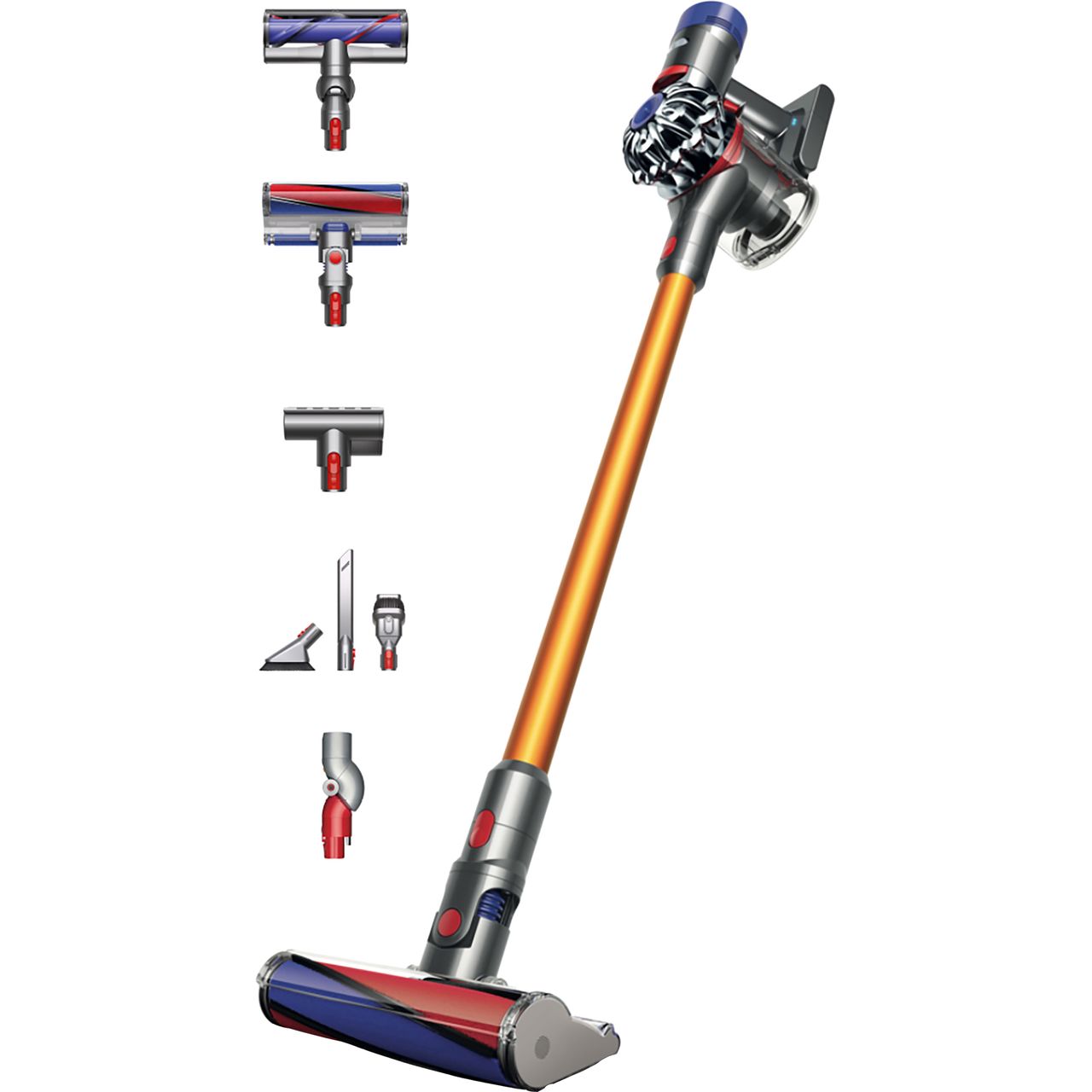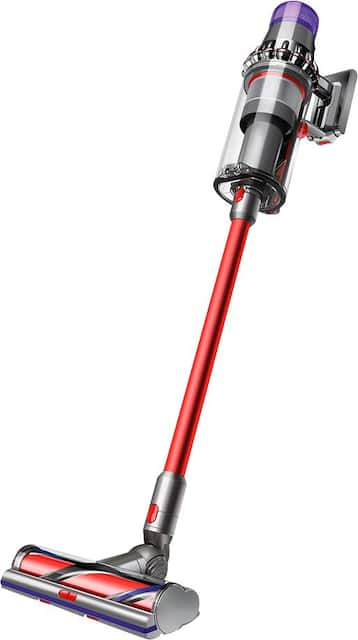eufy Anker eufy 25C Wi-Fi Connected Robot Vacuum, Great for Picking up Pet Hairs, Quiet, Slim
1500Pa suction power. BoostIQTM technology. High-capacity Li-Ion battery: delivers up to 100 minutes. Touch control. Wi-Fi enabled. Supports voice control. 0. 6L dustbin capacity. Works on carpets and hard floors. Triple brush cleaning and 3-step filtration.
Clean your floors with the push of a button using the eufy RoboVac 25C Wi-Fi Connected Robot Vacuum. It connects to a home’ s wireless network and accepts commands both by touch, via smartphone app and even from your voice when paired with a smart home speaker. The Li-ion battery runs for up to 100 minutes and then the robot vacuum cleaner returns to its base to recharge. Drop-sensing technology prevents falls down stairs. With three brushes that loosen particles, three-layer filtration and a dustbin to capture and contain them, this eufy robot vacuum is suitable for both carpets and hard floors. Powerful suction makes cleaning thorough and the brushless motor generates minimal noise. A slim profile lets the RoboVac fit beneath furniture and an app feature makes it quick and easy to locate if it gets stuck. Replacement brushes and filters are also included.
- 1500Pa suction power
- BoostIQTM technology
- High-capacity Li-Ion battery: delivers up to 100 minutes
- Touch control
- Wi-Fi enabled
- Supports voice control
- 0. 6L dustbin capacity
- Works on carpets and hard floors
- Triple brush cleaning and 3-step filtration
- Drop-sensing technology
- Quiet-running brushless motor
- Locate with the eufy Home app
- Compatible with both Alexa and Google Home
- Includes: eufy RoboVac robot vacuum, charging base, remote control, power adapter, 2x AAA batteries, 4x side brushes, replacement sponge foam and high performance filters, cable ties, owner’ s manual, quick start guide, welcome letter and envelope
Additional information
| Manufacturer Part Number | T2123111 |
|---|---|
| Model | RoboVac 25C |
| Assembled Product Weight | 5.2 lbs |
| Assembled Product Dimensions (L x W x H) | 12.97 x 12.97 x 2.85 Inches |
A pet, or companion animal, is an animal kept primarily for a person's company or entertainment rather than as a working animal, livestock, or a laboratory animal. Popular pets are often considered to have attractive/cute appearances, intelligence, and relatable personalities, but some pets may be taken in on an altruistic basis (such as a stray animal) and accepted by the owner regardless of these characteristics.
Two of the most popular pets are dogs and cats. Other animals commonly kept include rabbits; ferrets; pigs; rodents such as gerbils, hamsters, chinchillas, rats, mice, and guinea pigs; birds such as parrots, passerines, and fowls; reptiles such as turtles, lizards, snakes, and iguanas; aquatic pets such as fish, freshwater snails, and saltwater snails; amphibians such as frogs and salamanders; and arthropod pets such as tarantulas and hermit crabs. Smaller pets include rodents, while the equine and bovine group include the largest companion animals.
Pets provide their owners, or guardians, both physical and emotional benefits. Walking a dog can provide both the human and the dog with exercise, fresh air, and social interaction. Pets can give companionship to people who are living alone or elderly adults who do not have adequate social interaction with other people. There is a medically approved class of therapy animals that are brought to visit confined humans, such as children in hospitals or elders in nursing homes. Pet therapy utilizes trained animals and handlers to achieve specific physical, social, cognitive, or emotional goals with patients.
People most commonly get pets for companionship, to protect a home or property, or because of the perceived beauty or attractiveness of the animals. A 1994 Canadian study found that the most common reasons for not owning a pet were lack of ability to care for the pet when traveling (34.6%), lack of time (28.6%), and lack of suitable housing (28.3%), with dislike of pets being less common (19.6%). Some scholars, ethicists, and animal rights organizations have raised concerns over keeping pets because of the lack of autonomy and the objectification of non-human animals.
Quiet may refer to:
- Silence, a relative or total lack of sound
A robot is a machine—especially one programmable by a computer—capable of carrying out a complex series of actions automatically. A robot can be guided by an external control device, or the control may be embedded within. Robots may be constructed to evoke human form, but most robots are task-performing machines, designed with an emphasis on stark functionality, rather than expressive aesthetics.
Robots can be autonomous or semi-autonomous and range from humanoids such as Honda's Advanced Step in Innovative Mobility (ASIMO) and TOSY's TOSY Ping Pong Playing Robot (TOPIO) to industrial robots, medical operating robots, patient assist robots, dog therapy robots, collectively programmed swarm robots, UAV drones such as General Atomics MQ-1 Predator, and even microscopic nano robots. By mimicking a lifelike appearance or automating movements, a robot may convey a sense of intelligence or thought of its own. Autonomous things are expected to proliferate in the future, with home robotics and the autonomous car as some of the main drivers.
The branch of technology that deals with the design, construction, operation, and application of robots, as well as computer systems for their control, sensory feedback, and information processing is robotics. These technologies deal with automated machines that can take the place of humans in dangerous environments or manufacturing processes, or resemble humans in appearance, behavior, or cognition. Many of today's robots are inspired by nature contributing to the field of bio-inspired robotics. These robots have also created a newer branch of robotics: soft robotics.
From the time of ancient civilization, there have been many accounts of user-configurable automated devices and even automata resembling humans and other animals, such as animatronics, designed primarily as entertainment. As mechanical techniques developed through the Industrial age, there appeared more practical applications such as automated machines, remote-control and wireless remote-control.
The term comes from a Slavic root, robot-, with meanings associated with labor. The word "robot" was first used to denote a fictional humanoid in a 1920 Czech-language play R.U.R. (Rossumovi Univerzální Roboti – Rossum's Universal Robots) by Karel Čapek, though it was Karel's brother Josef Čapek who was the word's true inventor. Electronics evolved into the driving force of development with the advent of the first electronic autonomous robots created by William Grey Walter in Bristol, England in 1948, as well as Computer Numerical Control (CNC) machine tools in the late 1940s by John T. Parsons and Frank L. Stulen.
The first commercial, digital and programmable robot was built by George Devol in 1954 and was named the Unimate. It was sold to General Motors in 1961 where it was used to lift pieces of hot metal from die casting machines at the Inland Fisher Guide Plant in the West Trenton section of Ewing Township, New Jersey.
Robots have replaced humans in performing repetitive and dangerous tasks which humans prefer not to do, or are unable to do because of size limitations, or which take place in extreme environments such as outer space or the bottom of the sea. There are concerns about the increasing use of robots and their role in society. Robots are blamed for rising technological unemployment as they replace workers in increasing numbers of functions. The use of robots in military combat raises ethical concerns. The possibilities of robot autonomy and potential repercussions have been addressed in fiction and may be a realistic concern in the future.
A vacuum (pl.: vacuums or vacua) is space devoid of matter. The word is derived from the Latin adjective vacuus (neuter vacuum) meaning "vacant" or "void". An approximation to such vacuum is a region with a gaseous pressure much less than atmospheric pressure. Physicists often discuss ideal test results that would occur in a perfect vacuum, which they sometimes simply call "vacuum" or free space, and use the term partial vacuum to refer to an actual imperfect vacuum as one might have in a laboratory or in space. In engineering and applied physics on the other hand, vacuum refers to any space in which the pressure is considerably lower than atmospheric pressure. The Latin term in vacuo is used to describe an object that is surrounded by a vacuum.
The quality of a partial vacuum refers to how closely it approaches a perfect vacuum. Other things equal, lower gas pressure means higher-quality vacuum. For example, a typical vacuum cleaner produces enough suction to reduce air pressure by around 20%. But higher-quality vacuums are possible. Ultra-high vacuum chambers, common in chemistry, physics, and engineering, operate below one trillionth (10−12) of atmospheric pressure (100 nPa), and can reach around 100 particles/cm3. Outer space is an even higher-quality vacuum, with the equivalent of just a few hydrogen atoms per cubic meter on average in intergalactic space.
Vacuum has been a frequent topic of philosophical debate since ancient Greek times, but was not studied empirically until the 17th century. Clemens Timpler (1605) philosophized about the experimental possibility of producing a vacuum in small tubes. Evangelista Torricelli produced the first laboratory vacuum in 1643, and other experimental techniques were developed as a result of his theories of atmospheric pressure. A Torricellian vacuum is created by filling with mercury a tall glass container closed at one end, and then inverting it in a bowl to contain the mercury (see below).
Vacuum became a valuable industrial tool in the 20th century with the introduction of incandescent light bulbs and vacuum tubes, and a wide array of vacuum technologies has since become available. The development of human spaceflight has raised interest in the impact of vacuum on human health, and on life forms in general.






by Ashley
Ordered this on Wednesday, it was delivered to my door next day. Pleasantly surprised by that. Opened it up and set it on the charger, per instructions to fully charge before use. Did not take too long to charge. It did take a couple tries to connect it to the app, but it finally connected. Has been working like a charm. I was in desperate need of help keeping up on the dog hair as I have four dogs and a ridiculous schedule. I have a feeling this will definitely do the job. Also, not very loud, which is a great perk. So far, so good. One of the best purchases ever!
by Etonia
Arrived as expected. Makes a great gift.
by Wanda
My dog sheds a lot. He is very small dog but plenty of hair. I have been wanting something like this for a long time.
by Christopher
Had another model of this brand for about a year and its amazing. Cleans well, very quiet and maps out your rooms pretty quickly. Super happy with it, I just ordered a 2nd for upstairs on the Black Friday special today. It’s a fraction of the price of some of the bigger names and just as good if not better.